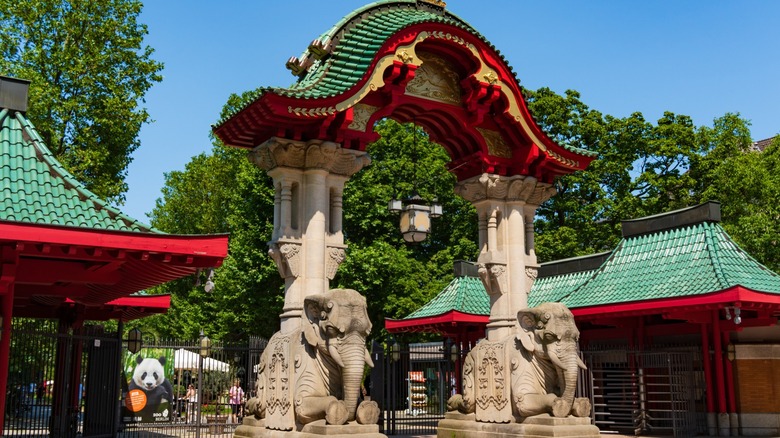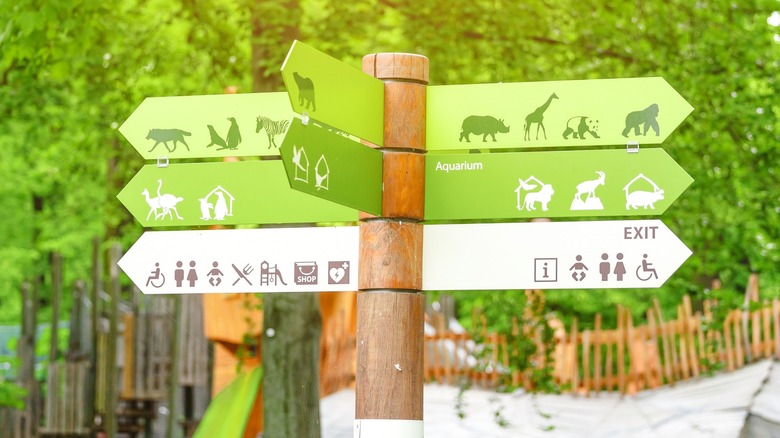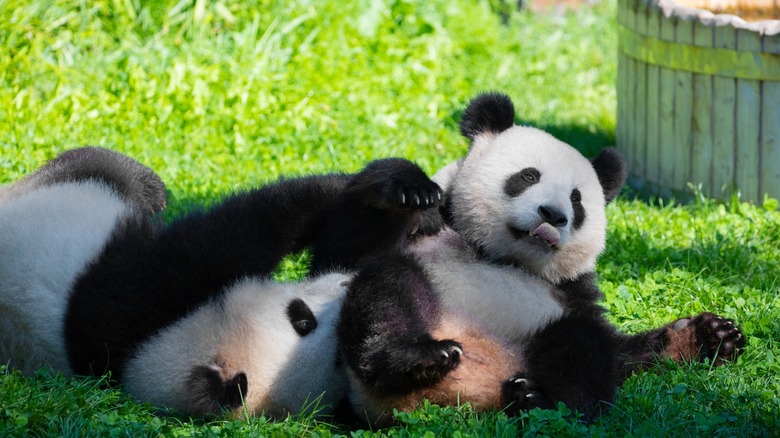Europe's Most-Visited Zoo Is A World-Renowned Destination Famed For Diversity And Fun
Zoo Berlin is not only Europe's oldest zoo, it's also the most visited, with 3.8 million animal-watchers annually. The zoo itself dates to 1844, when it was home to some of the wild animals donated by King Friedrich Wilhelm IV from his private collection, Tiergarten. That even predates Paris' oldest amusement park, flush with similar royal involvement. Today, the zoo is home to nearly 19,000 animals representing more than 1,000 species and includes an aquarium, which was added in 1913. Only 91 of the animals in the zoo survived the bombings of Berlin at the end of World War II, but the post-war years saw Zoo Berlin begin to breed endangered animals and flourish into one of the most diversely populated zoos in the world.
Zoo Berlin, at Hardenbergplatz 8 next to the combined U-bahn, S-bahn and train station Zoologischer Garten, is open every day of the year at 9 a.m. Its winter hours are October 28 – February 25, when it closes at 4:30 p.m., with last admissions at 3:30 p.m. During its summer season, from March 25 – September 22, it closes at 6:30pm, and at all other times of year, it closes at 6 p.m.; last admissions are at 5 p.m. Tickets for the combined zoo and aquarium, when booked online, are available for adults for €24, with school kids paying €11; children four and under get in free, but you must book a free ticket online. Tickets bought on-site will cost more.
Fun activities you can see and do at the zoo
Several popular habitats have been built for some of Berlin's favorite attractions. The Rhino Pagoda recreates a habitat with tall grass, rocks and swamp features. The Empire of Cats encompasses jungle thickets, wild savannahs, and night environments for predatory big cats. The charming Antelope House, the oldest surviving building on site, is in the heart of the zoo. Small children will be enthralled by Hans in Luck, a charming little zoo for littles. The petting zoo with sheep, goats, donkeys and ducks. But its the Panda Garden, home to the zoo's greatest superstars, that is the can't-miss attraction.
On most days, guests have two opportunities to see live panda feedings at the Panda Garden, at 11 a.m. and 3 p.m. Elephants are fed at 11:30 a.m., with chimpanzees, orangutans, and bonobos at 1:30 p.m. and Gorillas at 2 p.m. at the ape house and hippos at 2:30 p.m. at the hippo house. California sea lions are in live training sessions at 2 p.m. You can book a personalized encounter and a special introduction from a zookeeper with one of seven popular animals — Indian rhinos, hippos, sharks, giraffes, tapirs, aardvarks, and capybaras — by reserving an appointment online, at least two weeks in advance. A private encounter for two people costs €80. If up-close with kids isn't your thing, head next door to the Monkey Bar on the 10th floor of 25hours Hotel on Budapester Strasse 40, to see the monkeys from above. It's open from 1 p.m. Monday – Saturday, closing at 1 a.m. Sunday – Wednesday, and 2 a.m. Thursday – Saturday. Sundays it opens at noon.
Zoo Berlin is at its best when it comes to bears
Anyone who has visited Berlin may have noticed that the city has a thing for bears. You can find upright white polar bear statues around the city at hotel entrances and tourist attractions today, but it's been on the city's coat of arms since the 13th century. So in 2006 when Zoo Berlin became home to Knut, a polar bear cub abandoned by his mother and raised lovingly by zookeepers, Berliners were wildly excited. Sadly, Knut survived only four years, and his loss was felt greatly in the city. Fortunately, other bears are still thriving at Berlin's zoo today, like the European brown bears, which have been extinct in Germany (outside the zoo, that is) since the 19th century.
As we've shared, some of the most popular inhabitants of the zoo are its giant pandas, a species that is highly endangered and rare to find in zoos, too. Meng Meng and Jiao Qing were gifted to Germany from China in 2017 and have been since become beloved. The pair welcomed their second batch of twins to the world in 2024, with the first, Pit and Paule, returning to China in 2023.


